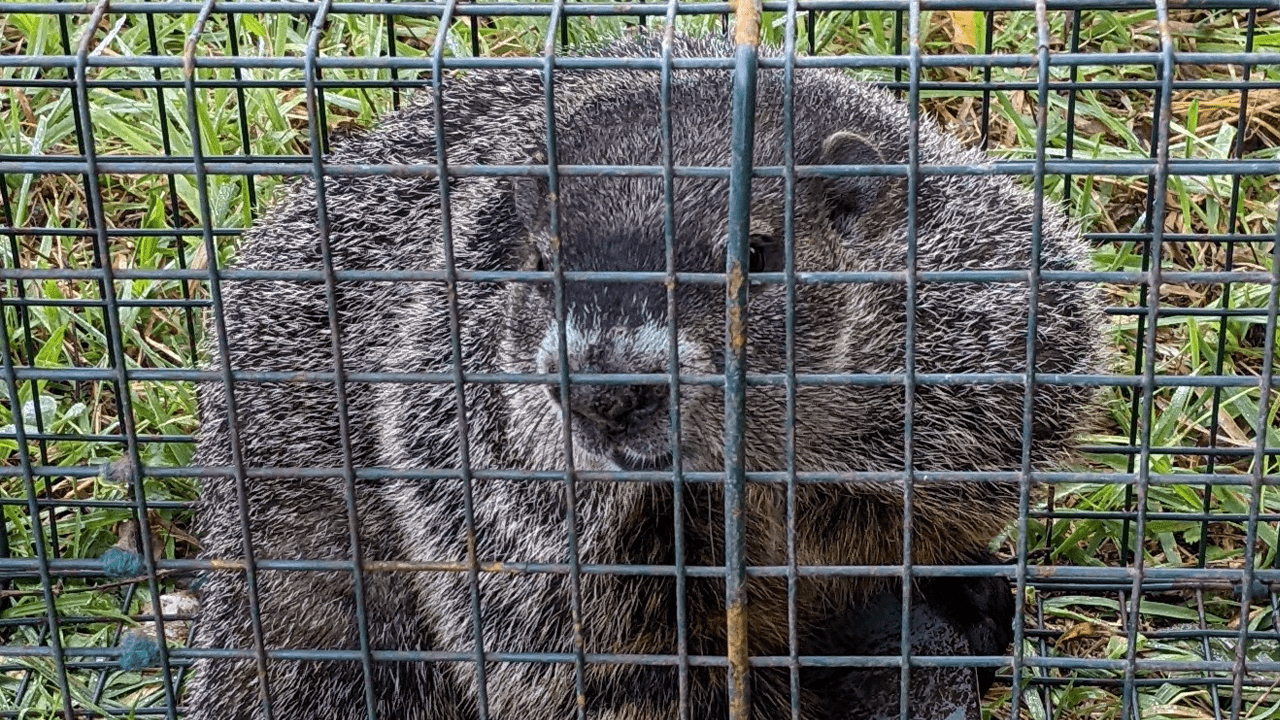In winter, fresh greens become scarce for the many quadrupedal visitors to your landscape garden. Notwithstanding, many conifers remain green, including pine, arborvitae, and hemlock that server as potential food for deer and other ruminants. Even trees that lose their foliage provide food (mast) for animals, such as beech nuts, chestnuts, and acorns. Soft mast from persimmon, pawpaw, apple, and pear trees also attracts and feed wildlife. The most damaging are the rodents that girdle the base of trees. Mice, voles, rabbits, and beavers can girdle young trees and even fell them! In this article, we’ll consider the common mammalian pests of trees and what we can do to protect them from damage.
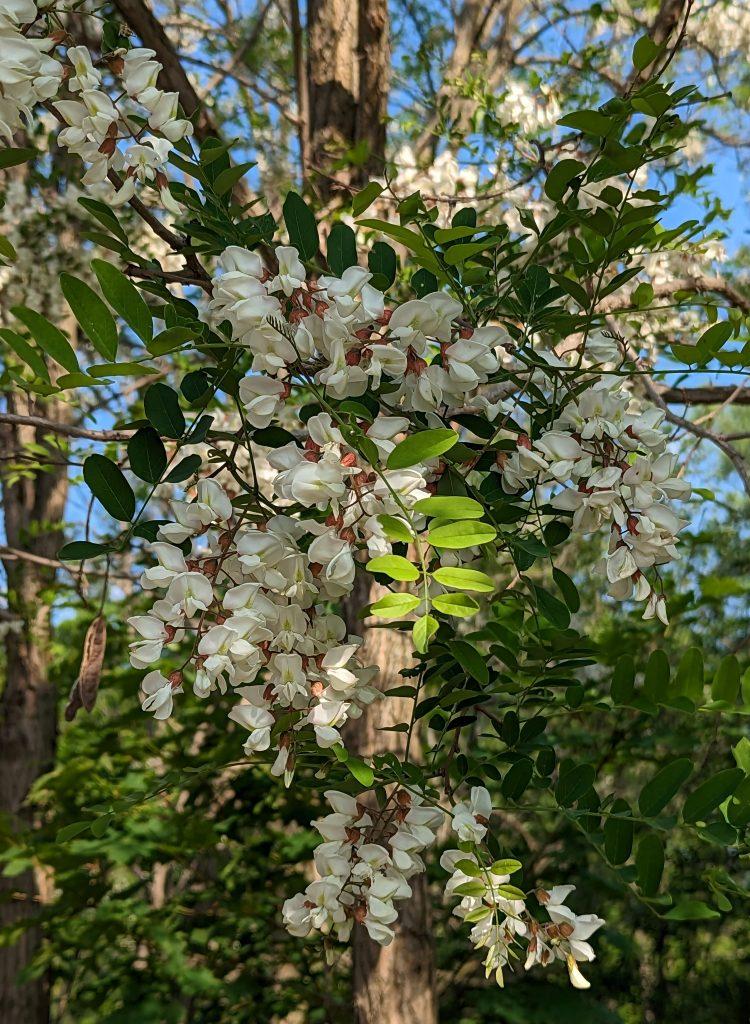
Oh Deer!
Deer damage trees by browsing, eating the buds, leaves, needles, and bark. Male deer damage trees by rubbing their antlers on tree trunks, stripping the bark in the process. Deer prefer trees that produce fruit and nuts, such as acorn, beechnuts, chestnuts, and hickory nuts. They also like soft fruit from apple, crabapple, pear, mulberry, pawpaw, and persimmon trees. Deer are attracted to aromatic trees like bald cypress, pines, hemlock, sassafras, and sumac. They prefer trees with smooth bark like maples and lindens, but tend to avoid trees with thorns, rough bark, or low branches.
The Volition of Voles
Voles are a kind of field mouse. They are herbivores that primarily eat grasses and forbs, tubers, and seeds. They can be found in many areas, including woodlands, gardens, meadows, and wetlands. Voles can damage trees by eating the bark at ground level, girdling the tree. This disrupts carbohydrate translocation between roots and leaves, which eventually starves and kills the tree. Voles are especially likely to damage trees in the winter when other food sources are scarce. Voles eat the bark of young trees, and can cause significant damage to fruit trees and orchards.
Mice (ain’t so nice)
Mice tunnel under snow and eat the bark of trees near the ground. Damage from mice is more severe if the tree is surrounded by heavy grass, weed cover, or mulch. Mice are attracted to fruit trees and conifers, as well as garden plants, including: beans, sunflowers, corn, grains, summer squash, tulips, crocuses, irises, and hyacinths. Mice and voles avoid pungent tasting bulbs such as daffodils, garlic, and alliums.
Groundhogs, Woodchucks and Gophers (but I repeat myself!)
Groundhogs can dig burrows that can be up to 50 feet long, which can damage, tear, and dry out tree roots. Groundhogs may gnaw or claw on tree trunks to wear down their teeth and sharpen their claws, which is particularly damaging to young trees and saplings. They prefer trees like black cherry and dogwood. They will eat fallen fruit such as apples, blackberries, and blueberries. They eat the leaves of red mulberry, and hackberry and of course, in the vegetable and flower garden, they eat greens, flowers and vegetables such as lettuce, alfalfa, clovers, dandelions, daisies, beans, broccoli, and cabbage.
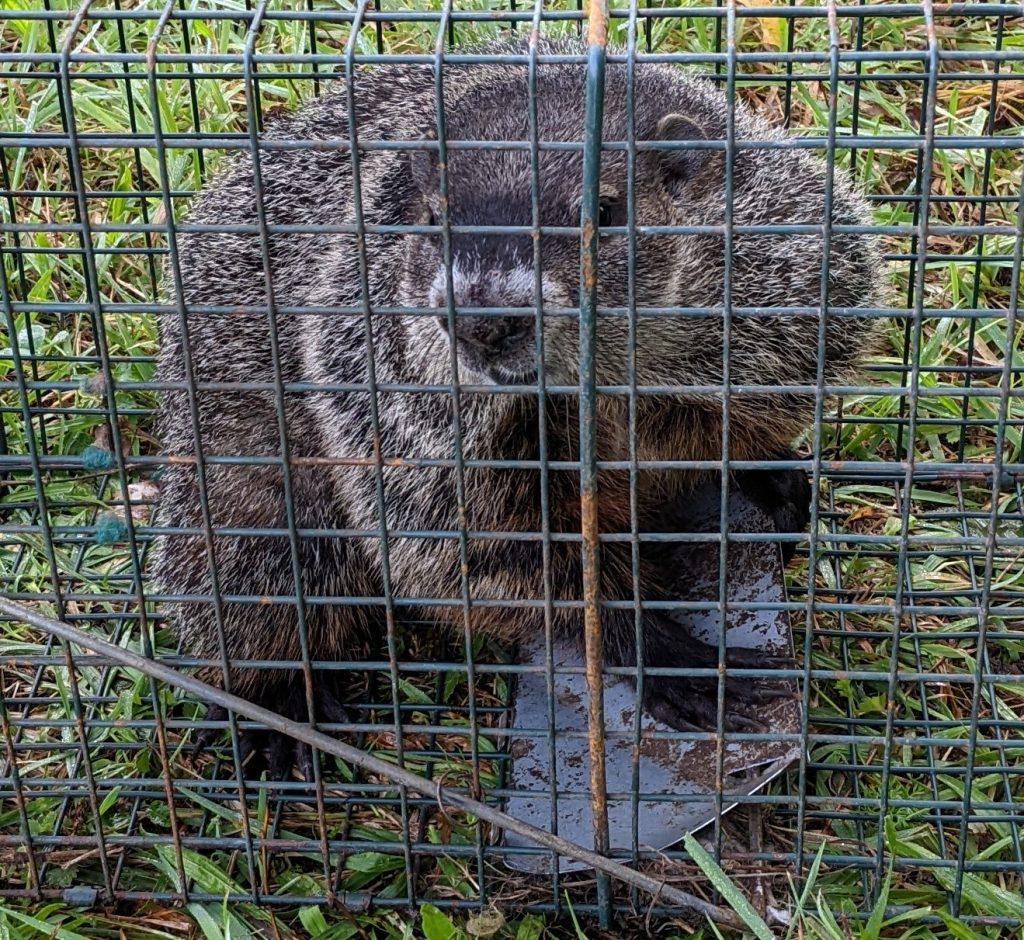
Down the Rabbit Hole
Rabbits can damage trees by gnawing bark, eating the tissue between the bark and the sapwood of trees (i.e., the lateral cambium). Rabbits can girdle larger trees by removing tissue around the trunk. Rabbits can also clip off small branches, stems, and buds. They prefer apple, cherry, plum, bald cypress, pine, maple, and nut trees in addition to autumn olive, cotoneaster, euonymus, and sumac.
Raccoons, Masked Denizens
Raccoons can damage trees in a number of ways, including burrowing, eating the bark of young trees, climbing, and nesting. Raccoons burrow into tree holes to form dens or build nests in trees out of sticks, leaves, grass, and other materials. They are excellent climbers and can climb trees to seek shelter or food. They damage branches by bending and snapping them. Raccoons are omnivores and eat a variety of foods, including fruits, vegetables, nuts, and insects. Raccoons can bring food and garbage back to their burrows, which can attract insects and molds. Raccoons are not particular to a certain tree type, but are often found in hardwood trees like oaks, maples, and beeches, and in conifers including pines and spruces.
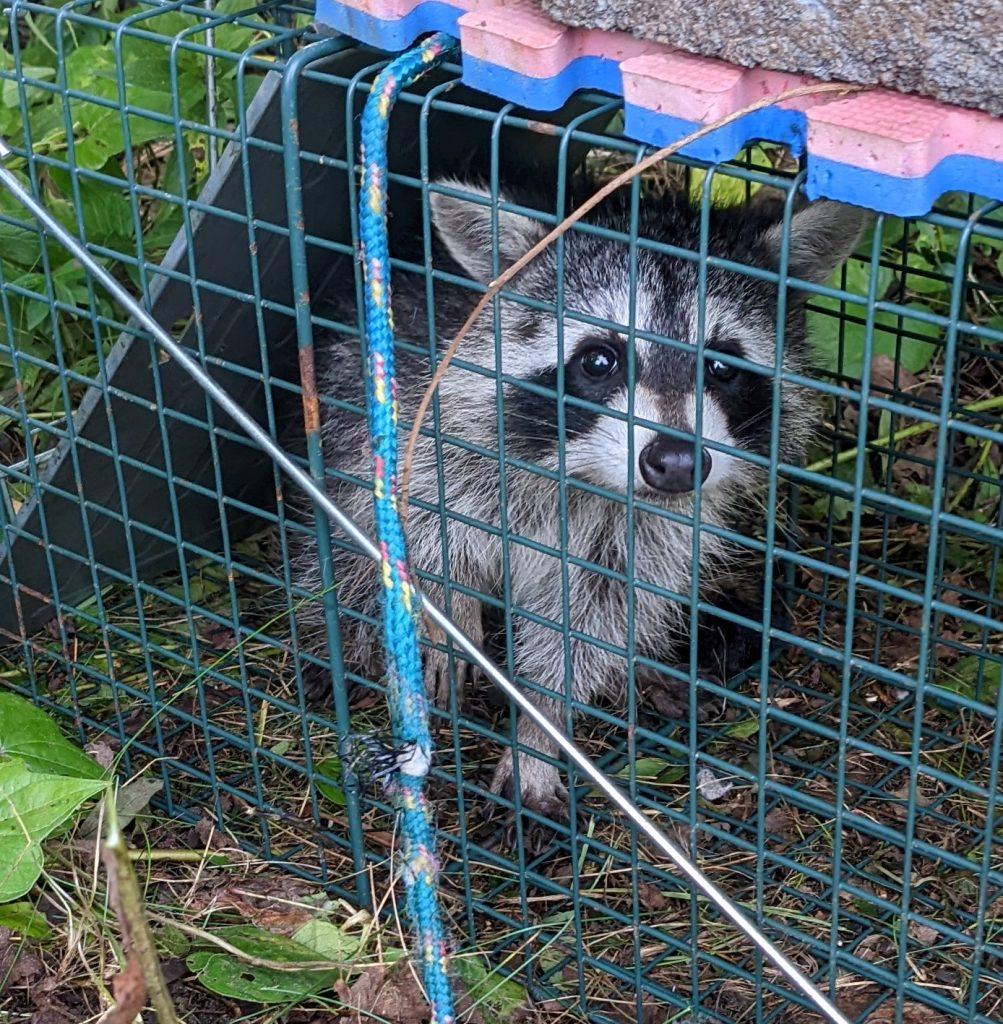
Leave it (NOT) to Beaver!
Beavers are most active cutting down trees in the fall to prepare for winter. They store tree limbs in a submerged brush pile near their lodge for food during the winter. Beavers use the branches they cut down to build their dams and lodges. They girdle tree roots, which can kill trees with stems over 6 inches in diameter. Root girdling can also allow pathogens to spread to other trees. Beaver ponds can flood crops, timber, and other areas, which can cause significant damage. Trees preferred by beavers include aspen, poplar, cottonwood and willow, alder, birch, cherry, and apple.
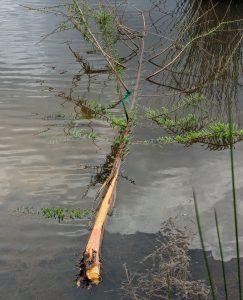
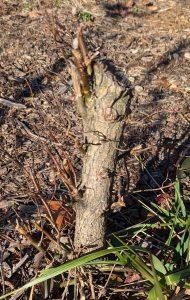
Protecting Trees from Critters
Here are some ways to prevent rodents from damaging trees including creating an exclusion zone, removing fallen fruit, applying tree guards and using repellents:
Create an exclusion zone: Wrap the tree trunk with ¼-inch metal mesh or hardware cloth. For voles, bury the mesh six inches below the soil and 18 inches above ground. For gophers, bury the hardware cloth a foot or more into the ground and bend it outward at a 90-degree angle at the base. For rabbits, wrap the mesh higher than the snowpack.
I have also used drainage pipe to protect the bark of young trees. It is easy to work with and with a slit down one side, readily wraps around the base of the tree. In addition, I put a 3’ perimeter fence using weld wire to keep rodents and deer from reaching the tree trunk. This combination works well to prevent both rodent and deer damage.
Pick up fallen fruit from under trees and compost it. Keep trash in durable bins with tight-fitting lids. Keep compost in a rodent-proof container with a tight-lid. Use snap traps baited with peanut butter can help control rodent populations. Or, you can adopt a barn cat! Cats can be good hunters to help control rodents. Attract owls by installing owl boxes and keeping the grass cut, particularly if you have adjacent wooded areas.
There are several ways to protect trees from deer, including:
Fencing
Install a tall fence (at least 8 ft) around your property or around individual trees to keep deer out.
Tree guards
Place tree guards around the trunk of young trees to protect them from deer antler damage. Tree guards are typically made of mesh plastic netting, plastic tubing, or special piping.
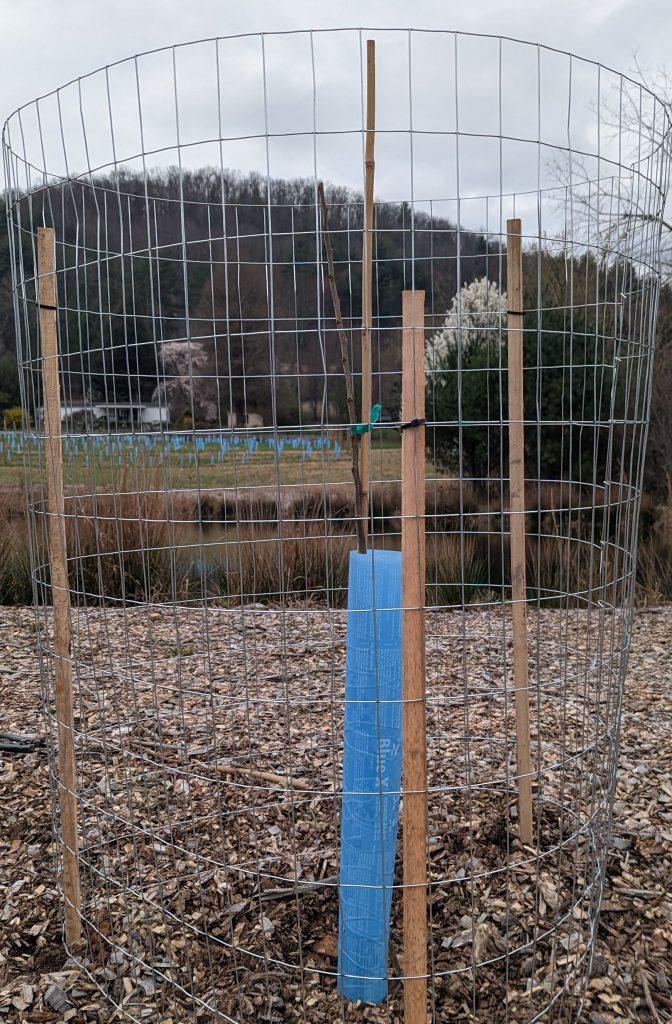
Burlap wraps
Wrap plants in burlap, cover the foliage of evergreen shrubs; also prevents branches from bending out of shape during heavy snowfall.
Deer repellents
Spray vulnerable trees and shrubs with smelly, bitter-tasting deer repellent. An effective repellent developed by the Connecticut Agricultural Experiment Station combines a mix of lanolin and an emulsifier and applied as a foliar spray, and claims to be effective for six months. The mix is as follows: lanolin (5 volumes), sodium lauryl sulfate (1 volume), water (4 volumes). If using a cup measure, this gives you 10 cups. This yields a final volume of 6.3 gallons of ready to use spray mix.
Plants
Deer dislike plants with fern-like foliage, fuzzy leaves, spines, or strong odors. I suppose this bit of advice is to plant plants that you may dislike or keep you at a distance as well! English and American hollies have spiney leaves that deer keep well away from. Oregon grape holly (Mahonia aquifolium) also has spiney leaves and fern-like foliage that deer also avoid. This plant is evergreen, and produces yellow flowers in spring followed by edible, purple grapelike fruit. Briars such as blackberry and raspberry and roses protect themselves with thorns (technically, prickles) that deer avoid. Trees with thorns include the cockspur thorn (Crataegus crus-galli), Washington thorn (Crataegus phaenopyrum), black locust (Robinia pseudoacacia) and honey locust (Gleditsia triacanthos). Avoid Callery pear, which also has thorns: it is invasive and weak-wooded. Deer like arborvitae, but avoid Green Giant arborvitae. Common boxwood (Buxus sempervirens) has a strong, disagreeable odor and bitter taste, deer avoid it. Plant it as a border to protect your garden plantings.
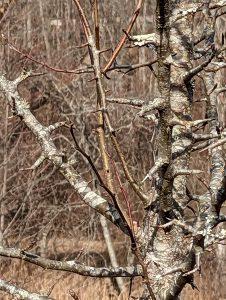
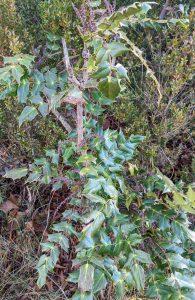
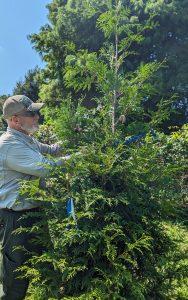
Motion-detector sprinklers
Install motion-detector sprinklers to scare deer away.
Remove food sources
Remove food sources from your yard, including bird feeders and pet food dishes.
Electric fencing
Use reusable multi-strand electric fencing as a barrier for deer. I think this bit of advice requires some clarification. I know, shocking! However, if weeds or tree branches that touch the wires aren’t controlled, the system will ground out. Hence electric fences require quite a bit of maintenance, so I do NOT recommend their use as a stand-alone. Its effectiveness is enhanced when used with exclusion fencing.
I hope some of these ideas will help protect your plantings. But no plant is deer proof, and no deer protection is fool proof! A fitting conclusion, I think is to paraphrase Roger Swain, past host of the PBS Victory Garden: “Gardeners know the difference between a plant and animal. A plant stays in place, whereas an animal climbs over, burrows under or goes through any plant protection you may devise!” But then, is this not the essence of our gardening?

